
Selecting Motors for Small Boats
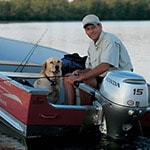 There's nothing like setting out on the lake for an early morning catch in your fishing or johnboat. It's the peace and tranquility that fishing and boating enthusiasts like myself look forward to each season. Others may enjoy using a dinghy boat to get from point A to point B or simply for a relaxing ride on the water.
There's nothing like setting out on the lake for an early morning catch in your fishing or johnboat. It's the peace and tranquility that fishing and boating enthusiasts like myself look forward to each season. Others may enjoy using a dinghy boat to get from point A to point B or simply for a relaxing ride on the water.
Either way, when choosing an outboard motor for a small boat, you want something simple and quiet that can produce just enough power to move you where you need to be efficiently and comfortably. If you already have an outboard motor, learn how to install it.
Choose the Right Size
Choosing the right size outboard motor for a small boat is easier than you think, but the size also isn't set in stone.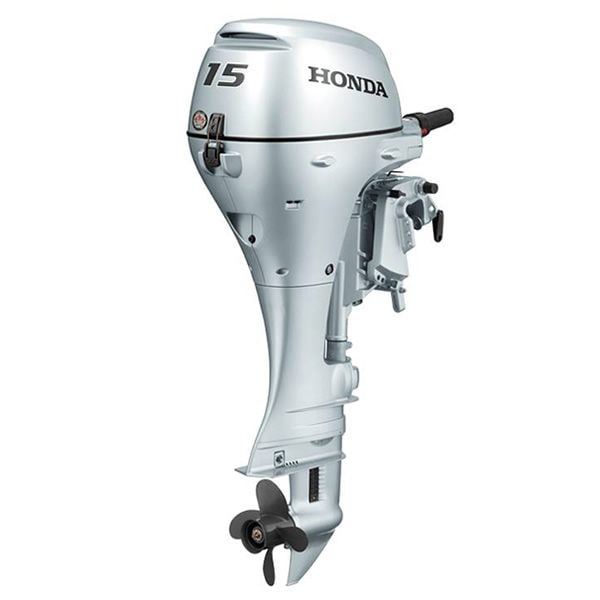
Find the Capacity Plate
Your boat should feature a capacity plate issued by the coast guard to tell you the safe and appropriate horsepower and total weight limit for your boat.
If it doesn't, it's likely it got removed at some point or your boat is an antique that was manufactured prior to August 1st, 1973 when the USCG began requiring them.
The capacity plate is typically located on or near the stern of the boat, and the horsepower limit is important to adhere to for safety reasons. If you equip your boat with too much horsepower, you'll end up tipping the hull to the sky and sinking motor-first.
But you don't have to equip your boat with as much horsepower as it can handle either. If you're using your boat to maneuver down shallow streams, into weed-filled coves, or simply to maneuver to a peaceful spot where you plan to anchor, a high horsepower motor just isn't necessary.
Choosing a Horsepower
Let's assume your boat has a maximum horsepower rating of 20 hp.
To find an adequate horsepower motor for your small boat or dinghy, determine the mid-range, which is halfway between 2.5 hp and the maximum horsepower listed on the capacity plate.
For example, if your boat is rated for a maximum of 20 hp, your mid-range horsepower would be 11.25 horsepower. However, you're not likely going to find an 11.25 hp outboard motor, so just round up or down to the nearest size. A 10 hp or a 15 hp outboard will better suit you.
Weight Considerations
Your boat can only hold so much weight, and that includes you and your gear. To determine how heavy of a motor you can equip your vessel with, you'll need to look at its capacity plate again.
Your capacity plate will tell you what its maximum weight capacity is in a couple of different ways.
First, in larger letters and numbers, it will list what the maximum passenger limit is for your watercraft. It'll say something along the lines of "4 PERSONS OR 500 LBS.," but the 500 LBS is not the total weight limit for your watercraft.
Below that, you'll see something more comprehensive, like "650 LBS. PERSONS, MOTORS, GEAR." This will be the total weight your dinghy can handle. Subtract from that your weight, the maximum weight you'd ever carry in passengers, the maximum weight you'd ever carry in cargo, and the remaining weight will be the most your outboard motor can weigh.
Choose the Right Shaft Length
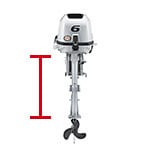 Because small boats have small transoms, you're most likely going to choose a short shaft length. While there are some small boats with larger transoms, and those will need a long shaft motor, most small boats will not require this.
Because small boats have small transoms, you're most likely going to choose a short shaft length. While there are some small boats with larger transoms, and those will need a long shaft motor, most small boats will not require this.
In fact, if you install a motor with a long shaft on a boat with a small transom, you will instantly regret it. Opening the throttle on a setup like this can cause dangerous problems. The position of the prop is important and keeps the boat stabilized when in motion.
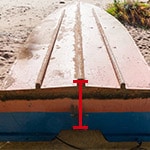 To determine the shaft length required for your boat, take out a measuring tape and measure the height of the back-end of the boat from top to bottom in the middle of the stern. Your shaft length should be about two inches longer than this.
To determine the shaft length required for your boat, take out a measuring tape and measure the height of the back-end of the boat from top to bottom in the middle of the stern. Your shaft length should be about two inches longer than this.
If you're an inch off, it's not a big deal. However, 5 inches off and you've got a problem. The diagram below shows recommended outboard heights for small transoms (15 inches), long transoms (20 inches), and extra long transoms (25 inches). It also shows how large an outboard motor should be relative to the boat's transom and water surface.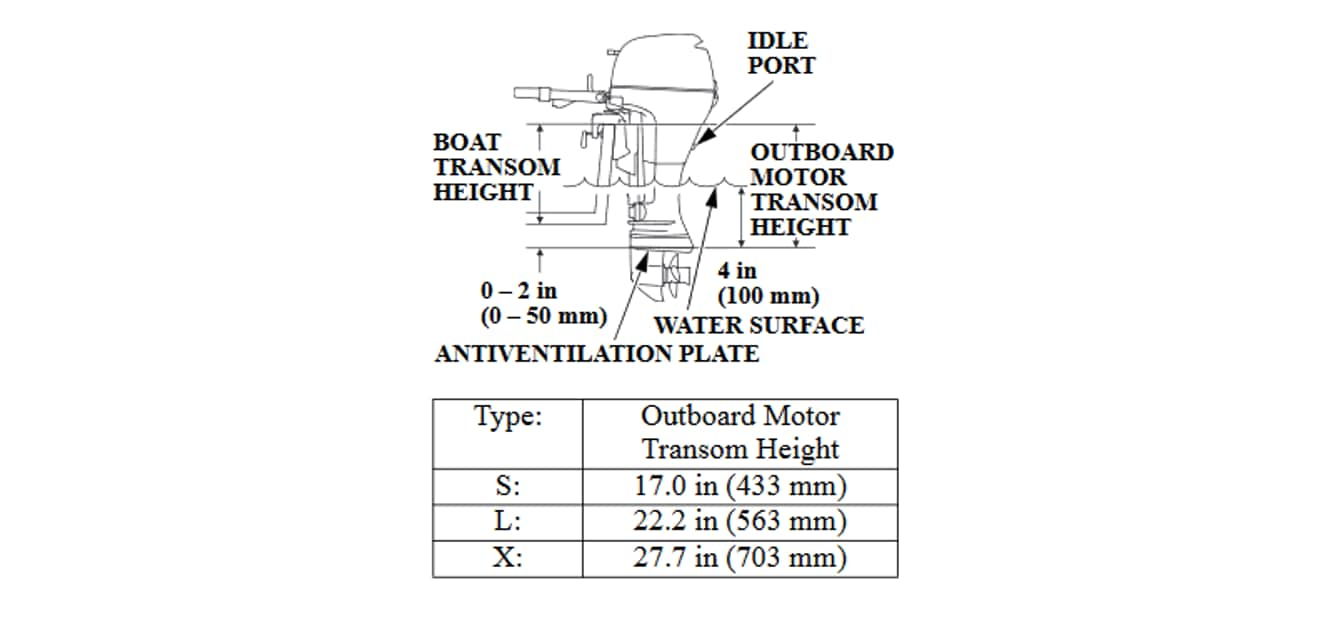
Choose the Right Features
A small boat motor may not boast a lot of bells and whistles, but there are some simple features that you may find are nice to have.
Electric start is a great feature to have on any boat, but especially on small boats. A light-weight boat drifts fast in strong winds. It may be cold, it may be a little rainy, and pull-starting a recoil outboard while you're rapidly drifting toward rocks isn't fun. Electric start makes it easy to start up and move away from hazards before you're on top of them.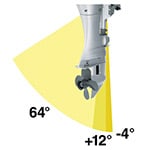 Power tilt is another great feature to have when you're powering a small boat through shallow waters. Especially if you've equipped your boat with a 15 or 20 hp motor that can give your shoulder a workout.
Power tilt is another great feature to have when you're powering a small boat through shallow waters. Especially if you've equipped your boat with a 15 or 20 hp motor that can give your shoulder a workout.
Manually tilting your engine out of the water every time you cross over rock beds and sand bars will have you wanting to cut your day short. Power tilt allows you to trim up your engine with the push of a button, saving your arm and shoulder for what matters - fishing, hunting, or simply relaxing in the great outdoors.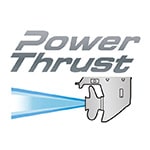 Power thrust helps get your boat moving easier. It'll give you 60 percent more thrust in reverse and 15 percent more thrust in forward. It helps to get your boat up to speed quicker and improves maneuverability while also helping to combat a stronger current or heavier wind.
Power thrust helps get your boat moving easier. It'll give you 60 percent more thrust in reverse and 15 percent more thrust in forward. It helps to get your boat up to speed quicker and improves maneuverability while also helping to combat a stronger current or heavier wind.
Other Considerations
Besides the above, think about how you'll be using your small boat when sizing a motor. Will you be using it every day? If so, you'll probably leave the outboard mounted to your boat, and it won't be an issue.
If you'll be using it weekly or monthly, you're going to need to remove the outboard to store it between uses. A lighter motor will be much easier to lift on and off of the transom.
Will you be using your outboard for transportation across a large windy lake? If so, a bit more horsepower might help keep you on track so you don't drift too much in the wind, and you'll get from point A to point B much more quickly and efficiently.
Finally, if you're primarily using it to move around a calm, quiet lake, less horsepower may be needed.
Set Sail
Whatever you use your small boat for, the right small outboard engine will make for a smoother, quieter, more efficient ride. Choose the right size and features, and you'll be happy for years to come.
Outboard Navigation

Outboard Motor Expert


